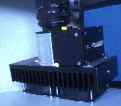

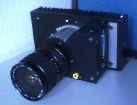
The camera is a CB245 from the electronics side but I decided to replace the liquid coolant system with a forced air design, which is a more mobile solution, although I know that the original liquid cooler is able to reach a lower chip temperature. For this reason I replaced the original Peltier cooler by a larger, more powerful one, and added a second stage on top of it, to reach a lower chip temp resulting in a lower dark current, this damned thing that bothered me so much in the past.
Three different views off the camera:
The second image the camera made is this one of my self:
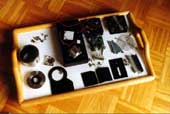 Camera
disassembled, jpeg, 51k
Camera
disassembled, jpeg, 51k
For support I thank Prof. M. Roemer, H.Bauch, B.Thinius and K.Boedewig who did the work on the lathe.
Technical specs of the camera are:
Resolution:
755 x 242 Pixels, high res. modes for planets, comets and the moon.
378 x 242 Pixels (binned by 2) more sensitivity and better matched to the long focal length of the CG11. One pixel covers 1.25x1.46 seconds of arc in this case.
Chipsize, fov and type: 6.4 x 4.8 mm, 7.9' x 5.9' (C11), TI 245 CCD, frame-transfer chip, no anti-blooming
Cooling: Two stage Peltier and 2 fans.
AD-resolution: 12 Bit
Connector: Printerport of PC
Power req.: 0.5 Ampere at +/- 15V , 4 Ampere at 12V.
Image format: FITS !!!
First outdoor tests were made on Feb. 3. Although the moon was there and polar alignment was bad, it was possible to image some deep sky objects. First was M42 which is of course quit bright, but then I was astonished to see
M51 with spiral arms with some seconds of integration time in the software's finder mode. The results shown here were done at 25 second integrations at F/10. Not overwhelming, mainly because ice was forming on the chip when it cooled down....
Meanwhile I have made the LDC-modification, which reduces dark current by more than an order of magnitude. First results follow. All images were exposed for 120 seconds and a dark field was subtracted. The new LDC was on and a focal reducer was used.
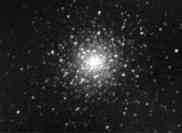 Globular cluster M3 in Canes Venatici, jpeg, 7k
Globular cluster M3 in Canes Venatici, jpeg, 7k
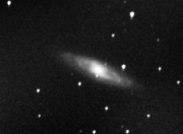 Spiral galaxy M65, 2x zoomed, jpeg, 5k
Spiral galaxy M65, 2x zoomed, jpeg, 5k
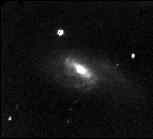 Spiral galaxy M66, 2 x zoomed detail, jpeg, 10k
Spiral galaxy M66, 2 x zoomed detail, jpeg, 10k
Two problems bothered me when the images were made. First, several streetlights
which are covered by trees during summer, are lighting my observation place
and caused the steep background gradient in the images, visible from the
down left edge to upper right. Second, cooling was something around 0 deg
Celsius, because the problem with condensations and ice still remains.
My idea to do the cooling in two steps, where the large Peltier would remove
most of the water vapor before the second stage brings the CCD down to
a very low temperature, does not help. In the next step I will replace
the air inside the housing by dry gas.
More images taken with this camera can be found on my new pages (1998) dealing with:
Comments welcome, contact:
